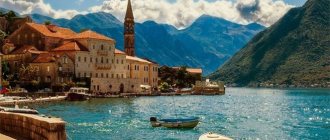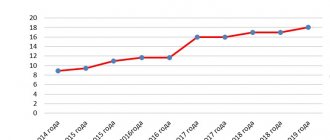The country of a thousand lakes and the midnight sun attracts many tourists from all over the world. The standard of living in Finland is high enough for people from other countries to think about moving for permanent residence. This area has good pensions, a lack of qualified specialists, decent salaries and wonderful nature. Of course, there are some pitfalls. If you know them in advance, you can weigh all the pros and cons of living in this European country.
About the country: climate, ecology, economy
The state is located in Northern Europe. The climate in the country is temperate, transitional from maritime to continental, in the north it is purely continental. Despite its northern position, it is not too cold here - due to the influence of the Atlantic.
Winters are moderately cold, the thickness of the snow cover in the north averages 40 cm, in the center - 30, and in the south - only 10. In the northern periods, winter is characterized by the polar night, which lasts about two months.
The average temperature in February in the south of the country is -6, and in July – +17. In the north it varies from -14 and +14, respectively. Extreme heat in Finland is considered to be +30, but such days are rare even in summer.
An important part of Finnish culture is concern for the environment. Despite the small territory of the country, there are 39 national parks, which are home to rare plants and animals. According to the “right to nature” inherent in Finnish law, any citizen can spend time in the park if he follows the rules.
The economy is focused on industry and high quality products. Its share in world production is small, as is its share in world trade, but Finland is in the leading group in terms of GDP per capita - $44,492. It is a small, highly developed industrial country.
Northern Lights in Lapland
Population, culture, unemployment rate
According to 2021 data, the population of Finland exceeded 5.5 million people. At the same time, the number of births is consistently lower than the number of deaths, and population growth is explained by a high level of immigration. The population density is 16 people per km².
Finns, Karelians, Finnish Swedes, Gypsies, Finnish Jews, Tatars and Sami live in Finland. In addition, there is a large number of foreign visitors: in 2011 they were 3% of the total population, since then the figure has only grown.
The official languages of the country are Finnish and Swedish. Finnish is spoken by 91% of the population, Swedish by 5% (and Russian by about 1%). Other languages (for example, Karelian and Tatar) are spoken by approximately 4% of the population.
At the same time, the attitude towards migrants is uneven. Some Finns do not like visitors of any nationality - this is natural for patriotic and conservative people who are in love with their own country. The other part does not like Russians specifically - after Finland was part of the Russian Empire and left it for a long time and bloodily.
However, most Finns are quite phlegmatic and tolerant - this corresponds to their mentality. In general, a typical portrait of a Finn looks like this: a person who is not in a hurry, does not like to show strong emotions and familiarity. It is believed that local residents are hardworking and carefully respect their personal space, that they take most words literally, that they are loyal and reliable, taciturn and difficult to get along with people.
Traditional crafts of Finland are wood carving and artistic forging.
Standard of living of ordinary citizens
Local people love their country. The standard of living consists of many indicators:
- Housing. Real estate prices are consistently high: the national average is 2,300 euros per 1 sq. m. m in secondary housing and 3600 in new buildings. You can take out a loan.
- Food basket. Bread – 1 euro, 400 grams of beef – 3, vodka – 20, milk – 1 euro, bananas – 0.7 euro. Grocery products cannot be called cheap.
- Basic goods and services. Transport is relatively cheap, but services are comparable in price to grocery products.
- Medicine. Finland has free healthcare and private clinics. Dentistry is the most expensive.
- Benefits and pension. The pension in Finland is slightly less than the average salary in the country, but generally depends on length of service and can reach up to 3,000 euros. Plus, pensioners are entitled to benefits.
- Average salary. Salaries depend greatly on the sector, but the national average is 3,000 euros.
- Lifespan. The average is 80 years. According to statistics, there are about a hundred pensioners over 100 years old living in the country.
- Tax policy. Taxes are levied on both wages and tax payments. The rate ranges from 7 to 40%.
- Infrastructure. Big cities have everything that is familiar to residents of St. Petersburg and Moscow. But in small ones, culture can be represented to a minimum, and the only shops are a grocery store.
- Availability of education. Education is free, every child must receive a secondary education, plus the state often pays for higher education.
- Crime situation. Crime in Finland is rare. In the last year, there were only 200 life prisoners in the whole country. Most often, criminals serve a sentence of 10 months in prison. Cases of violence in prisons are rare, and the judicial system is considered one of the best in the world.
In general, ordinary people live quite well in Finland, so it is not without reason that it is considered one of the most prosperous countries in the European Union.
Education in Finland
The Finnish educational model is reminiscent of the Russian (more precisely, Soviet). This is not surprising, since, being in the past part of Russia, the Finns borrowed all the best from the field of Soviet education and, as a result, brought primary school to an exemplary level. Today the Finnish school (the prototype of the Soviet one!) is considered one of the best in the world .
Finnish education is free for all levels of study . Russian immigrants take advantage of this moment. A significant part of them arrive in the country specifically for the purpose of studying. The country's higher education institutions are valued for the quality of their teaching.
Universities that stand out in particular are:
- Helsinki;
- Turku;
- Aalto.
- Oulu;
- Lappeenranta;
- Finnish Academy of Arts.
All of the listed educational institutions, and, in particular, the last university on the list, are very popular among immigrants from Russia and other countries.
Standard of living compared to Russia
Many Russians compare the standard of living of Finns with Russia. For clarity, you can look at the following indicators:
- Salary. According to statistics, the average income of a Russian is 36,000 rubles, while the average income of a Finn is 3,000 euros, that is, more than 200,000 rubles.
- Prices. The cost of food in Finland is higher. The living wage has not been established, but living life is expensive. For example, a carton of milk costs euros, but in Russia it costs 0.7 euros. And buying an apartment won’t be cheaper either. But this advantage is offset by the difference in wages and the constant increase in Russian prices.
- Taxes. In the Russian Federation they rarely exceed 13%; in Finland they can reach up to 40%. On the other hand, there is practically no corruption in the European country, and the purchase of an apartment for young people is not subject to tax at all. It turns out that this advantage has also been neutralized.
- Standard of living of pensioners. The average age of death for Finns is 81 years old, while Russians die at approximately 70 years old. The minimum pension is 47,000 rubles. In Russia, this amount is 8,000 rubles in the regions.
No matter how sorry it is to admit it, meeting the needs of the average person in Finland is better than in Russia.
Our mini-Finland
However, there is a place on our side where not every Finn will immediately understand that he is not at home, but in Russia. Kostomuksha is the youngest city in Karelia, 30 km from the border. In the 70s and 80s it was well rebuilt by the Finns using Finnish technologies from Finnish building materials. In terms of quality and appearance, these houses are much superior to Soviet and Russian high-rise buildings. The apartments there are still more prestigious and more expensive.
One of the streets in 1983
Kostomuksha is thriving together with the city-forming enterprise - one of the largest iron ore miners.
“If we can say about many cities in Karelia that they are dying out, then Kostomuksha is just beginning to live. People are attracted by the absence of destruction and dirt, so common in other cities,” writes the regional press.
larisa_bigun/Instagram
The most interesting thing is that the city seems to have absorbed a healthy spirit. Here, for the most part, they keep cleanliness, take care of buildings and common spaces, and play sports. Those who have visited Kostomuksha say that even the balconies are not cluttered. A positive illustration of the famous phrase about being and consciousness.
Standard of living compared to EU countries
A good way to compare the standard of living in Finland with the rest of the European Union is to look at the ranking, which identifies the happiest country based on indicators such as life expectancy, social support, corruption and citizens' trust in the country.
As of 2021, she is number one in it.
Helsinki, Finland
How do Finns feel about Russians?
One of the most pressing questions for immigrants is how are Russians treated in Finland? We can say with confidence that both tourists and migrants are welcome here. The former come to rest, thereby helping to develop the resort and tourism business, the latter are ready to do any work as long as the earnings meet their expectations.
Still, one cannot fail to note the discrimination that Russian-speaking migrants have to face when applying for work. The European Commission of Human Rights has documented numerous violations in this area. The response of the Finnish government was an immediate reaction and the creation of the Culture Foundation, the purpose of which is to support Russian culture.
But it should be remembered that the attitude towards Russians in Finland also depends directly on the individual. If a migrant manages to quickly find a common language with the residents of the country, then his nationality, habits or skin color will not matter at all.
If you believe the reviews, the state itself is also maximally interested in the rapid adaptation of visitors to new conditions. For this purpose, language courses and special services are created that allow them to cope with everyday issues, place children in kindergartens and help families establish contacts with their environment.
Popular professions and salaries
To understand how ordinary people live in Finland, it’s worth looking at the table of salaries by industry.
| Industry | Professionals | Technical staff | Minimum |
| Finance, insurance | 4870 | 4200 | 2770 |
| Trade | 4785 | 3520 | 2400 |
| Production | 4570 | 3555 | 2806 |
| Transport | 4560 | 3460 | 2780 |
| Communication, information | 4365 | 3630 | 2800 |
| Construction | 4300 | 3520 | 2870 |
| University education | 4250 | 3210 | 2500 |
| Public administration | 3960 | 2950 | 2870 |
| School education | 3685 | 2685 | 2200 |
| Catering, hotel service | 3415 | 2720 | 2220 |
| Healthcare | 3320 | 2800 | 2385 |
| Art | 3010 | 2650 | 2370 |
| other services | 3570 | 2760 | 2145 |
And you can live in Finland, albeit modestly, with a salary of 1.5 thousand euros.
The best cities and regions to live in
You can live in this European country either in big cities, or in smaller settlements, or even in rural areas. Typically Russian migrants prefer:
- Helsinki. A big city, the most beautiful European capital. There are many Russians here and there is always work for a visitor. The level of hostility is lower than in other regions because they are used to tourists.
- Tampere. Russians choose the second largest city in Finland for the same reason: many compatriots, high tolerance, and somewhere to get a job.
Smaller cities are chosen by those who are confident in themselves and their ability to integrate into society. The countryside is a paradise for those who value solitude, but getting along with your neighbors requires people skills and charm. The downside of life is that in small villages there are usually poor services for medicine and shopping.
Tampere, Finland
Comfort and mutual understanding
The capital of Finland, Helsinki, is considered the most honest city in the world. This fact was confirmed by a social experiment conducted in 16 cities around the world. The researchers placed 12 wallets in different areas of the city.
A nanosatellite designed by Russian schoolchildren will be launched into space
Liya Akhedzhakova filed a lawsuit to discharge her ex-husband
Children are next: doctors say when vaccination of children against Covid-19 will begin
It contained a small amount of cash, phone numbers, and family photos. Residents of Helsinki returned 11 wallets to their owners, this is a record of honesty; in other cities only half of the wallets found were returned.
Every major university in the country owns houses that students can book for free for their parties, even if the event involves drinking alcohol. These houses have a large living room, several bedrooms and a sauna.
Work and average salary for migrants from Russia, Ukraine and CIS countries
There are more than 70,000 Russians and Ukrainians in Finland. They live:
- In Russian-speaking diasporas. Such life is not much different from life at home: working with Russian tourists and other Russian-speaking people allows you not to encounter everyday manifestations of xenophobia. But there are no advantages to living in another country.
- On their own. As a rule, such people know Finnish well and settle according to their abilities. This group contains mostly sought-after specialists.
A strong Russian diaspora exists in Helsinki. But in smaller cities, finding compatriots can be difficult.
The wages of migrants differ little from the wages of native residents - this is regulated by the labor code.
How do pensioners live in Finland?
The Finnish government pays special attention to vulnerable groups of the population:
- pensioners,
- to the poor,
- young mothers,
- children,
- unemployed.
Pension provision implies a benefit that is assigned based on the results of a citizen’s work activity. In addition to this, the following types of assistance are prescribed:
- national pension,
- due to disability,
- benefits for immigrants,
- by old age.
The national pension (minimum payment) for people who are left alone is provided in the amount of 637 euros. Families receive 565 euros. Only those who have been a resident of the country for more than 40 years can claim the full payment.
Russian pensioners in Finland receive assistance for migrants in the amount of the national pension, but provided that they are already 65 years old and have lived in the country for at least 5 years.
The cost of medications and some operations (for example, ophthalmological) is reimbursed by the state. Some benefits can also be obtained for utility bills.
The procedure for employing foreigners
To work in Finland, an applicant must have:
- Residence permit with work permit. Allows you to get a job, pay taxes, and work in the field in which you have an education.
- Knowledge of Finnish language. Finns are conservative, so most employers look for workers who speak their language. The exception is seasonal work. There, a person is usually placed above a team of workers who can translate for them.
- Confirmed qualifications. It is impossible to work in Finland with a Russian diploma. In order for the employer to accept him, the applicant needs to pass exams, confirming his qualifications in practice. Naturally, all exams are taken in Finnish.
You can find an employer either independently or with the help of a special agency.
Finnish residence permit
How to apply for a residence permit
The first residence permit must usually be applied for before arriving in Finland at the Finnish mission in your home country. If the applicant resides permanently in another country, he or she applies for a permit from the Finnish mission in the country of residence. The application must be accompanied by the necessary explanations depending on the purpose of the permit applicant’s stay in Finland.
If an applicant comes to Finland for paid work, his employer can apply for a permit. In this case, the employer submits an application to the local police department or employment service. If an applicant lives abroad but intends to apply for a residence permit on the basis of family ties, a relative living in Finland can do this for him. You must leave a statement at the police station at your place of residence.
In the category of repatriates, former Finnish citizens and Finns by origin can apply for a residence permit either at a Finnish mission abroad or at a local police station in Finland. When obtaining permission, they must reliably prove their origin. They are not required to provide proof of income.
If, as an exception, the applicant applies for a first residence permit only after arriving in Finland, the application must be submitted to the local police station, where the necessary form can be obtained.
A new permit to remain for a limited period of time (additional permit) as well as a permanent permit are usually issued by the local police station. A statement is submitted to the police. If you want to extend your work permit, you can also submit an application to the employment service.
There is a fee for applying for a residence permit. Payment is made in advance, and in case of refusal the money is not returned.
Decisions regarding residence permits can be appealed to an administrative court. Instructions on how to appeal will be provided with the decision.
Starting a business: what are the possibilities?
The Finnish government supports small businesses, and the conditions differ little regardless of whether it is opened by a native resident or a newcomer.
Of the 260,000 companies actively operating in the country, 93% are small businesses, and 6,500 are opened by Russians.
To grow your business, you need to identify a suitable niche and get down to business. At the same time, it is necessary to know the language, understand your field and first study the differences in mentality. What works great in Russia may be completely unclaimed in Finland.
Love for the word
Finnish is one of the most difficult languages in the world. John Ronald Reuel Tolkien was so fascinated by it that he used it as the basis for the language of the Elves that he invented. Finns know 40 synonyms for the word “snow”, but cannot say “please” - there are no analogues for the word in the language. But there are many other words that, to the eyes of visitors, seem like funny expressions. For example, kalsarikännit translates to “drinking in your underwear.” The biggest feature of the local language is the absence of future tense. For Finns, life only matters in the present tense.
Finns are avid readers. The entire population of the country is a little over 5 million people, but every year they check out more than 67 million books from the library. Private libraries can even be found in gas stations. It is interesting that libraries not only preserve and lend literature, but also provide musical instruments, sports equipment or a sewing machine for temporary use.
Experts say the coronavirus pandemic has become endemic
Lev Leshchenko admitted that he listens to Klava Koku and Oksimiron
Russian vaccine is in demand in Latin America
Getting an education
This European country provides free education to those who speak its language - and this is a great incentive for students to learn Finnish. English-speaking students will have to pay at least 1,500 euros per semester.
In total, there are 19 classical universities, 3 polytechnics and a higher military school in Finland. All of them practice the Bolognese system: first the student receives bachelor's status, then master's status. You can apply:
- immediately after graduation, if you pass the exam;
- after studying in Russia;
- after completing a bachelor's degree, you can immediately enroll in a master's degree;
- by taking part in a student exchange program.
A big advantage of education in Finland is the opportunity to use your diploma throughout the European Union.
Purchase of real estate
Since 2000, foreigners can freely buy any property: from simple land or houses to commercial properties. Moreover, apartments here are considered movable property: when buying real estate, a person buys shares in it, which is equivalent to ownership.
The owner of real estate in Finland does not receive a residence permit, but can spend 90 days in the country in six months if he applies for a multiple visa according to a simplified procedure.
You will most likely need an agent to make the purchase.
Transport
Public transport in Finland is quite expensive. A travel card for the entire metropolitan region without benefits costs 160 euros per month . In small towns, prices are more modest, because there are fewer types of transport (usually only a bus) and the distances are not so impressive. A travel pass in a small city will cost 60 - 70 euros. Discounts are available for children, youth and students.
If you have a car, you will have to pay an annual tax - approximately 200 euros per year. At the same time, you pay more for diesel cars - about 600 euros per year. To this we add mandatory car insurance - at least 500 euros annually . Annual technical inspection - 60 euros . Most of the expenses are gasoline - about 200 euros per month , if you don’t travel very much.
Obtaining a residence permit: stages, conditions, procedure
Migrants in Finland who have a residence permit have rights almost equal to ordinary citizens. The only restriction is that they cannot vote in elections. You can obtain a residence permit on the following grounds:
- family reunion;
- homecoming;
- employment under contract;
- obtaining refugee status;
- studying at a Finnish university.
There are no other reasons. To obtain a residence permit, you need to provide documents to the Migration Service at your place of residence:
- international passport;
- two photos with standard design;
- standard application form in Finnish;
- confirmation of the grounds for a long stay in the country - a letter from the university, a contract with the employer, a marriage certificate;
- documents confirming residence in the country: lease or purchase and sale agreement;
- confirmation of payment of the fee;
- income certificate confirming that the applicant pays taxes and regularly receives a salary.
After all documents have been submitted, all that remains is to wait for a response. If everything is fine, a residence permit will be issued.
Registration of permanent residence and obtaining citizenship
Those who want to live in Finland not just permanently, but as a full citizen, must apply for permanent residence. The package of documents is the same, plus a motivation letter. Need to:
- pass an exam on knowledge of the Finnish language, as well as knowledge of the history of the country;
- continuously reside in the country for 4 years;
- have a job, the availability of which can be confirmed by documents;
- pay taxes correctly.
If Finland decides that it is interested in the person, he will be issued a permanent residence permit and citizenship.
Life of pensioners and minors
The size of a pension in Finland depends, as in other countries, on the grounds on which it is issued. Most often this is an employment pension, which amounts to 1,630 euros for men and 1,450 euros for women on average, minus tax.
This is quite enough to lead a comfortable life, go to circles for pensioners, travel once a year (to Russia, for example) and engage in hobbies.
Both men and women retire at age 65. If a pensioner wants to continue working, the law does not prohibit him from doing so; he will continue to receive a pension.
If you believe the stories of the pensioners themselves, they are quite happy; for many it was a discovery that in fact the retirement period is a long, well-deserved vacation.
Things are a little different with minors:
- children are sent to kindergartens, where teachers take care of them, or a nanny is hired;
- a year before entering school, the child attends preparatory courses;
- at the age of 7 the child goes to primary school, then goes to general school;
- Having completed 9 grades, a child can either go to get a profession or enter a lyceum and from there go to a higher education institution.
Throughout the world, Finnish education is considered quite good, while the Finns themselves are concerned about its decline.
In the summer, children have vacations and play clubs in their free time. The system differs little from the Russian one, if the quality of education is not affected.
Heated parking, sauna and salary of 200 thousand: How the Finnish “poor” live
A Russian guy moved to Finland, got a job at a factory as a simple concrete worker and surprised his former compatriots by showing how “poor” Finns live. In a “disadvantaged” area, in the opinion of locals, everyone has a very decent apartment, free lunches and even heated personal parking.
Yuri Pella is a fairly well-known blogger in Russian-language YouTube. No, he doesn’t interview stars, doesn’t sing or do humor, but his channel “YuraPaPu – Life in Finland” has almost 400 thousand subscribers. The fact is that Yuri moved from Russia to Finland, to the town of Joensuu, several years ago, and in his free time he records videos about his life in a foreign country.
The author especially emphasizes: his task is not to compare Russia and Finland in order to say how bad everything is with us. He simply shows his second homeland without embellishment, with all the pros and cons.
In one of the videos, the guy told how things are with housing in Finland. According to Yuri, the area in which he rents an apartment is classified as “black” - this means that mostly low-income Finns live there. There are also alcoholics and drug addicts, and of course, quite a few migrants.
What is a “black” area in Finland
It is even more surprising to see that every resident there has their own parking space. “You can’t leave your car anywhere - you’ll get a fine of 40 to 50 euros,” says the author. A nice bonus is the electric heating built into the parking lot with a timer: “When you come to your car in the morning, your engine is already warm, it’s warm in the car, you don’t have to clean the windows, the car starts easily... It’s a really cool thing,” admits Yuri.
Next, the blogger shows a garbage site: according to him, this garbage can is very dirty by Finnish standards. Although in the frame we see almost perfect containers, on each of which it is written what type of garbage it is intended for. Garbage, like everywhere else in Europe, is sorted.
Winters in Finland are even harsher than here, but in the morning your car is already warm and you can drive right away. Photo: Tomi Hänninen/Globallookpress
There is always a children's playground near the house, as well as a mailbox: Finns still love to write paper letters, but they do not need to go to the post office to send a letter to loved ones.
The house itself, in which Yuri rents an apartment, looks very nice, despite the fact that not the richest people live there. By the way, this is evidenced by the announcement in the entrance: it indicates the schedule of free lunches that are regularly organized by charitable organizations. The house is brick, only three floors (Varlamov would have liked it). There is a sauna in the house that everyone can use: there is a schedule on the door. A “subscription” to the steam room costs only 10 euros per month.
For Finns, a sauna is not a luxury, but a necessary part of life. Photo: Zhao Changchun/Globallookpress
Separate parking for guests. The house has a stroller room where you can also store bicycles, and a clothes dryer with a stove. Also, as a rule, each home is entitled to a free washing machine for public use. In addition, there is a common storage room, divided by a grid into cells: in them you can store various things like car tires - in a word, everything that Russian residents litter their balconies with because of the despair and greed of developers.
Some cells, Yuri shows, are locked. This is not typical for Finland, but specifically in this area the contingent, as we wrote above, is “dubious”, and therefore sometimes there are cases of theft.
“If you don’t like the closets, look for another apartment.”
Next, the man gives a mini-tour of his rented apartment. "Kopeck piece" with an area of 59 sq. meters with a huge living room and all the equipment costs him and his wife 430 euros per month - about 38 thousand rubles at the current exchange rate. It’s even cheaper than in Moscow, but the earnings at the Finnish plant where Yuri mixes concrete cannot be compared with salaries there in Russia: he receives about 2,300 euros per month, minus all taxes, which is more than 200 thousand rubles.
It is interesting that apartments in Finland are usually rented with built-in wardrobes: they are required to be installed when the house is rented out. “We can’t do anything with them, if you don’t like the cabinets, look for another apartment or... turn a blind eye to them,” says Yuri, as if apologizing for the outdated (actually quite decent) furniture.
By the way, in the door of each apartment there is a slot for mail: the postman throws all correspondence directly into your hallway, you don’t even need to leave the house.
It is also worth noting that both the house itself and the apartment are municipal, that is, they are owned by the city. Moreover, the city administration does not have the right to refuse to rent anyone who wants to rent housing. Moreover, if your refrigerator or stove breaks down, all breakdowns are repaired at the expense of the municipality. The same story applies to renovations in houses and apartments.
You won’t find high-rise “human buildings” in Finland during the day with lights on. Photo: NORDLUND JOAKIM/Globallookpress
Of course, even in Finland, not all ordinary factory workers receive a decent salary: entry-level employees with no experience earn about 9-11 euros per hour. But if you are not lazy and constantly improve your skills, as our hero did, then there is every chance to grow and build a career, and therefore earn more money. Now Yuri Pella works as a pourer, and his rate is almost 17 euros per hour. This is about 1,500 rubles - the amount that the vast majority of ordinary Russians, especially in the provinces, receive for a day of work.
In addition to the salary, employees regularly receive bonuses and pleasant gifts from the company: for example, Yuri is paid 400 euros (almost 35 thousand rubles) per year for compliance with safety regulations, and an additional 250 euros (22 thousand rubles) are paid for summer holidays and Christmas. . All overtime is paid at one and a half times the rate. As a result, during the year our compatriot earned almost 40 thousand euros - almost 3.5 million rubles.
Yes, the Finns have very high taxes: Yuri gives almost 30% of his earnings to the treasury. But even after all the payments and renting an apartment, the family still has enough money to lead a normal middle-class lifestyle.
Who is to blame and what to do?
Watching these reports from a seemingly small and poor country that has virtually no mineral resources becomes excruciatingly painful. The Finnish “poor” have virtually the same benefits as the middle and upper class, and also receive assistance from the state, while in Russia the gap between the standard of living in the capitals and the provinces, between the poor and the rich is simply appalling. If you think about it, then provincial Russia, at least our entire Non-Black Earth Region, should live approximately the same way as the Finns. We have a common history, similar climate, distances, nature... There are no valuable minerals, the main income comes from forests, agriculture and industry. It would seem that there is nothing complicated, there is no need to reinvent the wheel: just look at how it works in Finland and do the same in Russia.
However, Russian regions continue to be impoverished. While the capital's rich drink on the summer veranda of Chateau Cheval Blanc at 135 thousand rubles per bottle and show off their new Lamborghinis, Vologda and Pskov workers are tearing their veins to get the unfortunate “fifty kopecks”. Not per day - per month! And their wives are racking their brains over how to carve out at least a couple of thousand from the family budget to send their child to school. What needs to be done to redirect colossal cash flows from Moscow to rapidly impoverished regions? The president found the answer: during a recent direct line, Vladimir Putin said that in order to reverse this situation, it is necessary to move the offices of large companies that operate in the regions to these regions. We were talking about Siberia, but it’s easy to assume that this is just an example.
Putin sent oligarchs to Siberia. Photo: Kremlin Pool/Globallookpress
In this case, the head of state emphasized, taxes would go to regional budgets.
Konstantin Malofeev , previously spoke about the need to force large enterprises to bear responsibility for the region in which they operate :
Where your heart is, where your grandchildren and children go to school, you build your world. This applies to officials, state corporations, and businessmen. If you are the general director and live in Norilsk, then Norilsk will flourish. The same as Surgut. If top management lives where money is made, where workers work, everything improves there. And if you look at us, most corporations operate on Rublyovka in the Odintsovo district of Moscow. Judging by where it is improving. And it should improve in the place where our gold, timber, and fish are mined. Then everything around will change: the world, the system, and people,
– Malofeev said on the air of “First Russian”.
There is hope that at least these clear and unambiguous ideas of the president will be taken into account by officials and will not be sabotaged, as happened with the May decrees. And perhaps then every resident of Omsk, Kostroma or the village of Bolshiye Berezniki will have a salary of 200 thousand, his own heated parking space and a free sauna.
“What about them?”
In just a couple of decades, we have been taught not to adopt the best experience of countries in the world, but to live with an eye on others. But if you take a closer look, is everything so good where we are not? Let's understand the subject matter. Every Monday Constantinople talks about world experience in one or another area of life. We are not saying that theirs is bad, but Russia’s is good. We simply present the facts, including showing what we can strive for and what it is better to forget about forever.
Log in or register to leave comments.
Found an error in the text? Select it and press CTRL + ENTER
Reviews from Russians about life in Finland
Life in Finland through the eyes of Russians looks ambiguous. All reviews can be divided into categories:
- Negative. If you put them together, it turns out that Finland is an excellent country, but only for those who are ready to work, achieve, confirm diplomas several times and have a sought-after specialty. It is difficult for unskilled workers to live on one salary. In addition, Finns have a prejudice against Russian specialists: it is believed that in Russia you can buy a diploma from any educational institution, therefore, before hiring an emigrant, the employer will check and double-check not only his documents, but also his skills.
- Neutral. Negative ones are supported, but they are usually written by qualified specialists who are not afraid of inspections. Neutral reviews emphasize high prices (including for real estate) and some prejudice against Russians, and counterbalance them with cleanliness and high salaries.
- Positive. Reviews in this category usually focus on the feeling of security, local nature and quality of products. The simplest example: a woman who has lived in Finland for several years suggests somehow comparing Finnish tomatoes with the same-looking tomatoes, but grown in Spain. The taste is strikingly different. And although in supermarkets the former cost 5 euros, and the latter – 2, buyers clearly prefer the former.
Life in Finland is not the same for Russians. Someone found a job and is happy, someone built a family and received permanent residence on this basis. Some people are not so successful in their job search.
Naturally, the reviews are different. They agree on key points and highlight the pros and cons of immigration.
Work in Finland
There is great competition in the immigrant labor market due to high salaries. For one unqualified vacancy, the number of resumes sometimes reaches up to 100. Experienced, qualified specialists who have recommendations and speak Finnish or Swedish have a chance of getting a well-paid job. Knowledge of only English is acceptable in the field of computer technology.
All in-demand specialists must speak Finnish and Swedish. Knowledge of English is desirable.
| Profession | Monthly salary, euro |
| IT specialist | 4000–6000 |
| programmer | 3000–4000 |
| engineer | 3700–8000 |
| architect | 3000–8000 |
| nurse | 2300–4000 |
| laboratory assistant | 2800–3500 |
| doctor (depending on category) | 4000-15 000 |
| dentist | 6000–7000 |
| chemist | 5000–6000 |
| salesman | 1500–3000 |
| cashier | 1900–2000 |
| mini chef | 1300–1800 |
| Chef | 2500–3500 |
| waiter | 2000–2200 |
| security guard | 1500–3500 |
| builder | 2000–3500 |
| harvester, berry picker (in a good year) | 1800–3000 |
| international driver (truck driver) | 2500–3000 |
| electrician, electrician | 2500–3300 |
| maid, cleaning lady | 1500–3000 |
| nanny, nurse | 1500–3000 |
Migrants who do not have a higher education also have a chance of finding employment in this country. Foreigners often hold junior staff positions in various social institutions or care for those in need at home. The main requirement for applicants for such vacancies is knowledge of the Finnish language.
To search for work without intermediaries, use Internet sites. We present some of them in the table below.
| www.te-palvelut.fi/te/fi/ | official website of the Finnish Ministry of Labor. |
| www.monster.fi | in Finnish |
| rekrytointi.com | in Finnish |
| www.oikotie.fi | in Finnish |
| careers.barona.fi | in Finnish |
| www.experteer.com | English site |
| www.workinfinland.com | English site |
| www.adecco.fi/en-us | English site |
| www.helsinki.fi/urapalvelut/english/ | vacancies for students |
| www.boyden.fi/finland/ | vacancies for management positions |
Unemployment rate and prospects for migrants
The unemployment rate in Finland is higher than in neighboring countries, at 8.5%. At the same time, 85% of the population with higher education has a permanent job. The country provides a flexible system of benefits for unemployed citizens. A single allowance for all categories is 800 euros per month (tax-free).
Migrants, including Russians, Ukrainians and Belarusians, are entitled to receive adaptation benefits. It is calculated according to the same scheme as payments to the unemployed. At the same time, the migrant is obliged to comply with all the rules of the adaptation program: register at the labor exchange, attend advanced training courses and language courses.











